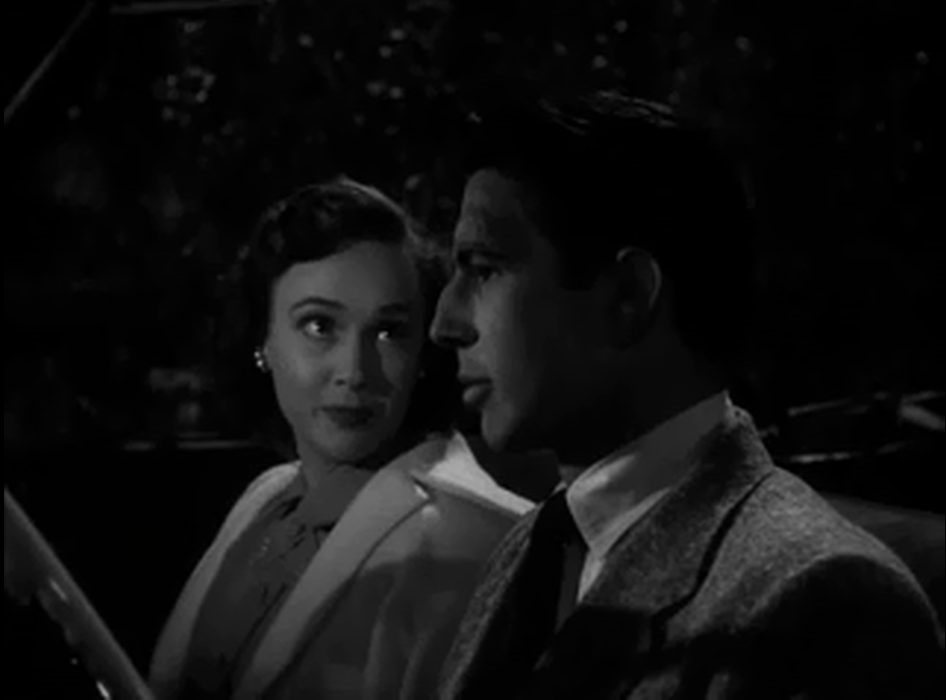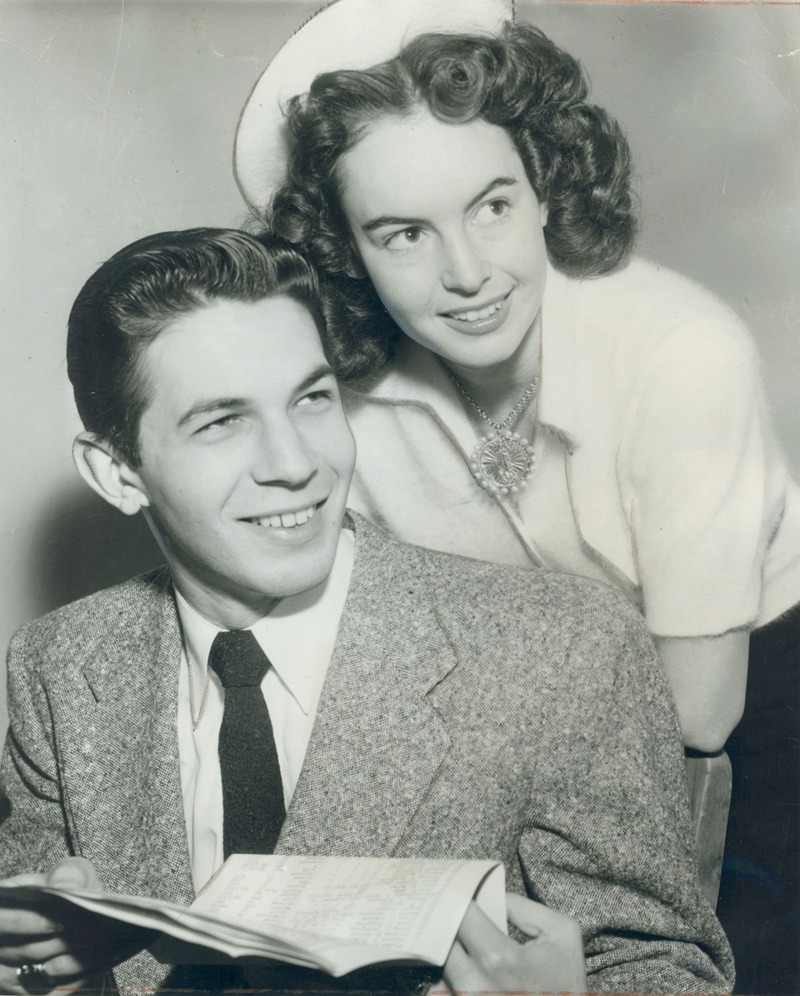Kid Monk Baroni (1952)
Synopsis:
Leonard Nimoy plays a disfiguered kid who finds fame and fortune as a boxer, but loses himself in the process.
What the Internet Has to Say:
In Search of the Early Leonard Nimoy:Kid Monk Baroni, The Balcony, and Deathwatch
My early years in Hollywood were heavily influenced by Marlon Brando. The uniform was T-shirt and jeans.
—Leonard Nimoy, from I am Not Spock
(...) His first major role was as a boxer in the low-budget film, Kid Monk Baroni. Not a “great” movie by any standard—the story is cliché and overwritten—it’s nevertheless quite watchable and Nimoy makes a strong impression.[1] The story focuses on a young Italian American, Paul Baroni, nicknamed “Monk” because of his broken nose and disfigured face. Nimoy plays Monk as a tough guy, the leader of a street gang who comes under the tutelage of a local priest who teaches him how to box. The story is standard, kitchen-sink melodrama, but as a character, Monk is perfect for a young method actor. Even though Monk is a brute in the ring, he also has a sensitive side, singing in the church choir and developing a secret passion for Gregorian chants that stays with him long after he has to leave the choir.
The role of the sensitive boxer is perhaps the quintessential method actor role. Clifford Odets wrote the archetypal version of the character in Golden Boy, a 1937 play about a boxer who was also a talented violinist, and John Garfield, Kirk Douglas, and Burt Lancaster all played variations in the late ‘40s. Moreover, two years after Nimoy’s turn as Baroni, Brando would win an Oscar for On the Waterfront, and two years after that, Paul Newman would fill in for James Dean in Somebody Up There Likes Me. For mid-20th century American actors striving to follow the teachings of Stanislavski, the sensitive boxer might as well have been Hamlet.
Kid Monk Baroni isn’t in the same weight class as those other films, but it really establishes the kind of actor Nimoy saw himself as in 1952. He seems quite natural adopting the accent of the streets—he calls the priest “Faddah”—and he’s particularly good at tapping into the character’s violence and anger. But what makes the film particularly interesting is the fact that Baroni, like Spock, is wrestling with dual identities. What’s more, because of his face, he’s essentially typecast as a “dirty” fighter and has to hide his interest in music from his manager. When he has plastic surgery to repair his face, he tries to become a more defensive fighter, but he’s unsuccessful and the syndicate backing him demands that he go back to being the brutal, “dirty” fighter they originally agreed to back. Much like a typecast actor, Baroni can’t break free from expectations.
Source: sequart.org/magazine
What the Press Has to Say:
Leonard Nimoy first appeared in the Los Angeles Times on Feb. 18, 1952, when he was 20 years old – long before the world ever heard of “Star Trek.”
In 2008, Times reporter Geoff Boucher rediscovered the photo, along with the strange article that went with it. Here’s how he described them:
The article that accompanied the photo was an odd one and shows the tone (not to mention the casual sexism) of mainstream Tinseltown coverage of that era. But, of course, it’s still far less crass and raunchy than anything TMZ does these days.
The “news” here was a judge approving Nimoy’s contract with Jack Broder Productions — the approval was needed since, by 1952 legal standards, a 20-year-old was considered a minor. [Below], you can find a portion of the article, which actually uses the word “logically” (Vulcan foreshadowing!) and then goes on to describe Nimoy’s female friend in the photo as a “cute tomato” with a “snug skirt.”
The article which appeared on page A9 with no byline (hmmmm…do you think a publicist might have written it?) was right next to the astrology column and a furniture ad:
It Takes a Pretty Miss to Score With Lensman
When Leonard Nimoy, 20, went before Superior Court Judge Frank G. Swain and received approval of his 10-picture contract with Jack Broder Productions, the next move was to have been in a picture in The Times.
However the photographer was not impressed with a contract approval in which the minor was the only other guy.
“Who wants to look at a picture of a guy?” he asked logically, for a photographer. Go get a cute tomato and pose with her, and we’ll get your picture in the paper.”
Nimoy left and brought back Mona Knox, with whom he is currently making a picture, “Kid Monk Baroni.”
“I’m a fighter in it, and she’s my feminine interest,” he explained. “She takes my dough in the picture.”
There’s a bit of scrambled text in the next paragraph, but it essentially says that the judge approved the contract that would pay Nimoy $200 a week and add a $25-per-week raise after every second film. The paragraph also notes that the 22-year-old Mona was wearing “a white sweater and snug skirt.” The final paragraph: “The photographer approved of Mona.” Sheesh.
Needless to say, The Times’ coverage of Nimoy has gotten much better since he first graced our pages. In his honor, today we’ve rounded up a slew of articles about him, including a feature about his photography, an appreciation of his music and much more.
Full coverage: Leonard Nimoy, 1931 - 2015
Photo: Leonard Nimoy and Mona Knox in 1952. Credit: Los Angeles Times file
What Leonard Nimoy Has to Say:
My first tremendeous break in Hollywood came in 1951, when I was only twenty, and cast as the lead in a modest film called Kid Monk Baroni. The Monk was an Italien Boy from New Yorks's East Side who became a boxer. The role was especially interesting because he had a disfigured face as a result of being a forceps baby. Hence the unkind nickname "the Monk," because he supposedly looked like an ape. The face made him an outsider, an alien in his own world.
The first day I arrived on the set, I didn't I had the part. I had auditioned over and over for the role, always finding myself in a waiting room with twelve or fifteen other guys who looked just like me. Finally, I did a real sales pitch to the producer and he said, "Okay, let me think about it. I'll either hire you as the lead for a bit role. Come back Monday morning." (This happened on a Friday night.) So I came back on Monday, went to the producers office, and the secretary said, "Go over to rehearsal room C. The cast is there with the director."
Still not knowing my fate, I went to rehearsal room C, feeling very embarressed and lost, and sat against the wall. Finally the makeup man - a very talented artist by the name of Lee Greenway - came up to me and said, "Are you Leonard Nimoy? I'm looking for him."
He led me to the makeup chair and began to make molds of my face, so that foam rubber appliances coud be made. At that point , I realized that I had been cast as the lead.
The day filming began on Kid Monk, I sat down in that same chair and watched as Lee affixed the finished appliances to my face. Awed, I watched the slow transformation in the mirror as my mouth, nose, forehead became no longer Leonard Nimoy's, but the Monk's. Even though I wasn't a thouroghly trained actor at the time, my emotions instinctively respondet to this new face.
I looked like an outsider, a person who didn't belong. I could identify with the feelings evoked by being "different," could understand why the Kid had erected a protective shell of shyness and physical toughness to hide his true feelings. Yet like the Hunchback, he too had a heart that yearned for understanding and compassion.
Source: I Am Spock, Century, 1995
You can download the movie here, thanks to Jackie, who found that website. And, for even more pictures to drool over, there is always Tumblr.










